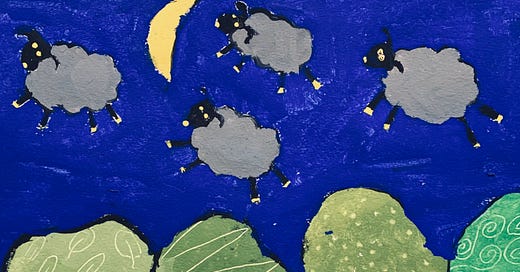Ghazal for half-remembered astronomy
I've got a long list of half-poems and a tired brain, so it's soothing to return to form. I didn't get the syllable counts quite right; maybe next time. I copied the rules for the ghazal below.
See the whiteface bole of a bending tree, silver moon, a tipping star leaning down to touch the grass where we gaze, reaching for a slipping star. I walk hard-shouldered, under switchblades of young trees, sorting and skipping stars searching for the right one: arc to Arcturus, continue to Corvus. Each day, you pull at the passing flowers—now white, now fuchsia—clipping stars from their green universe. They don’t dry, but flatten damply into folds. On the roof of the Astronomy building, we telescope, lipping star names from notes taken in the half-lit lab, competing to know the most sky. See the statue of an angel, sighing. His legs dangle, dipping star- shaped feet over horned branches, a slug darkening one shin. Waiting for spring.
The below description is from What is Form in Poetry? on writers.com.
TYPES OF POETRY: THE GHAZAL
Length: Minimum of 10 lines
Stanzas: Couplets
Metrical requirements: All lines must have the same number of syllables.
Rhyme Scheme: Both lines of the first couplet end with the same word. This word also ends line 4, 6, 8, etc. The word preceding the repeating word follows a different rhyme scheme.
The ghazal (pronounced like “guzzle”) has a long and complex history, migrating throughout Africa, Asia, and the Middle East in its 1400 year history. The earliest ghazals date back to 7th century Arabia, shortly after the Islamic Caliphate was formed. Ghazals are romantic and tragic in nature, a tradition which many contemporary poets uphold.
The ghazal’s form and function varies somewhat between cultures, but the general rules for writing a ghazal are the following:
Every line must have the same number of syllables. Your choice!
Each stanza must be a couplet.
There must be a minimum of 5 couplets.
The first and second line of the poem end with the same word, called the radeef.
Even numbered lines (Lines 4, 6, 8, 10, 12, etc.) also end with the radeef.
The word before the radeef must also rhyme. It cannot rhyme with the radeef, and the same word cannot be used twice. This word is called the kaafiya.
Each couplet must operate independently and as a whole. The couplet can stand alone as a poem, and it can form a larger poem, much like pearls on a string forming a necklace.
Psh, is that all? Ghazals are tricky and require each word to be carefully chosen, so a good ghazal may take a very long time to complete. Here’s a ghazal example, with notes demonstrating the above requirements.
Other contemporary ghazals:






Amazingly beautiful !!